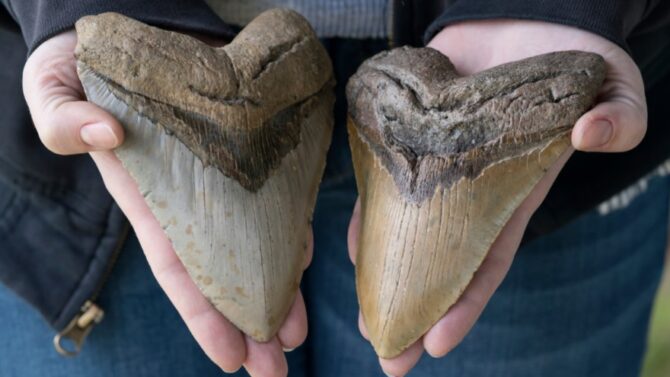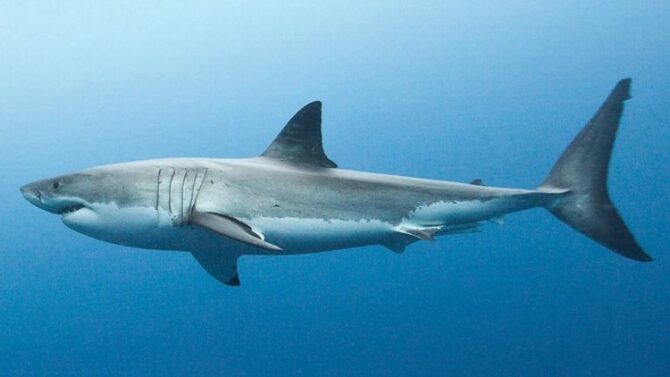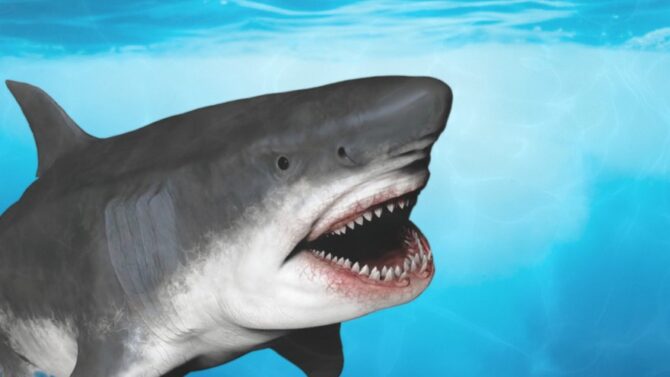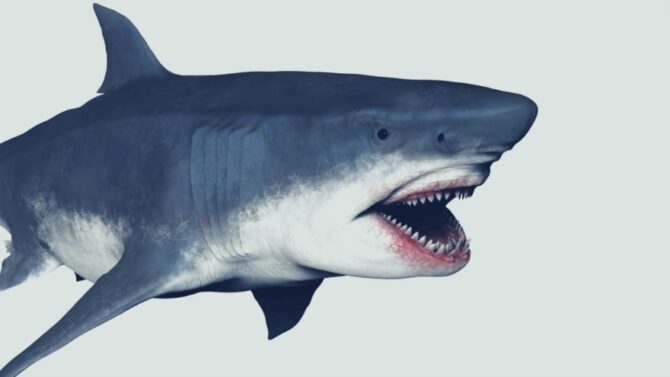The Megalodon was the biggest shark to ever exist in our oceans.
It went extinct millions of years ago, and yet fossils of it are being found to this very day!
Megalodon teeth are not extremely rare; you can get them at affordable rates.
However, the price of a megalodon tooth will vary based on certain factors (size, condition, where it was discovered, etc.).
This great animal would have been a sight to behold: with its sharp teeth and large body size.
To learn more about megalodon tooth prices and the different factors that can make its price vary, read on.
How Much is a Megalodon Tooth Worth?
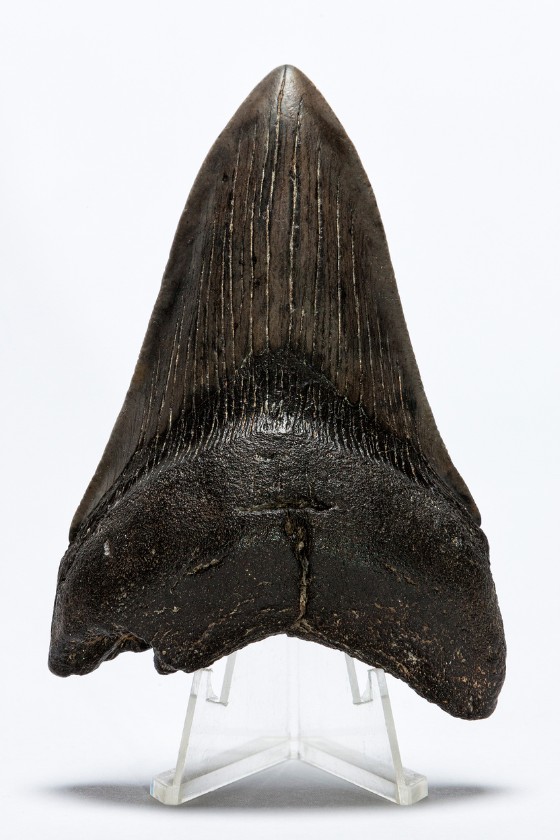
The price of a megalodon tooth depends on so many variables: size, quality, where it was found, its weight, etc.
A small lesser, quality tooth may cost lesser than 50 dollars, while a sizeable collector-standard tooth could cost over a thousand dollars and may run into tens of thousands of dollars.
To ascertain the quality of a megalodon tooth, one must know the exact features to look out for not to be duped.
Tooth Size
Let’s discuss how to define a Megalodon tooth size. To measure it, the diagonal length (from the highest corner of the root to the pointier edge of the tooth.
The longest diagonal represents the length of the tooth.
The measurement has to be exact because any little change in length (increase or decrease) has a considerable impact on the price.
The megalodon’s teething process was very interesting. It had over 250 teeth aligned in 5 rows in its mouth.
An estimate made by experts declared that this shark could lose over 40000 teeth in its lifetime.
They shed their teeth while growing or when they become worn out.
Most sharks didn’t live up to full maturity, so smaller teeth are more frequently stumbled upon and stored in sediments.
Larger teeth are rarer, thus making their market value higher.
A baby megalodon’s teeth can be as little as an inch, while those of a full-grown adult can easily surpass six inches in length.
Divers often find teeth that are between 4 to 5 inches long, but once the teeth size encloses 6 inches or more, it is much more expensive.
This is because of larger teeth or infinitely rarer. Here is an estimated price range of some megalodon teeth that have some defects (commercial grade):
- 2-3 inches teeth price is between 20 to 60 dollars;
- 3-4 inches teeth price is between 50 to 100 dollars;
- 4-5 inches teeth price ranges between 100 to 200 dollars;
- 5-5(half) inches teeth price varies from 200-400 dollars, etc.
These estimated prices are for places where megalodon teeth are fairly common (Florida and the Carolinas).
Once a tooth size surpasses 5 and a half inches and is very close to 6 inches (i.e., a mature megalodon tooth), the price increases exponentially.
A 6-inch tooth can be sold for double the price of a 53/4 inch tooth.
A 7-inch tooth which is exceedingly rare, will probably cost over ten thousand dollars.
Considering this significant price increase, it’s very obvious that size is key, and every single extra inch counts.
However, it should be noted that size is just one of the factors that determine the price of this great shark’s teeth.
The State of the Tooth?
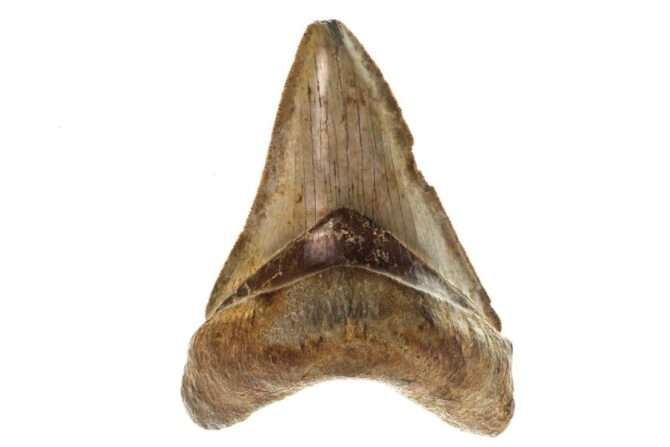
After a full analysis of a megalodon’s teeth, the condition the teeth are in influences its market value almost as much as its size.
It is rare to find a tooth with no defects, which means that if such a tooth is discovered, it will be very expensive even compared to those that have few flaws.
To determine the state a tooth is in, some elements have to be factored in:
- Root Condition: Is the root in full shape, or is it worn out?
- Coating: How well coated in enamel is the tooth? What condition is it in? Bigger teeth often have lots of peeled enamel, specifically in the middle of the blade.
- What do the serrations look like? Are the serrations on the tooth intact? Megalodon teeth that got offshore or in the river are mostly worn out to an extent. Finding a megalodon tooth with perfect serrations and a sharp tip is very rare.
- Tip: Is it still sharp? Teeth with sharper edges are not often found, which is why they are much more valued. It is possible to find teeth with sharper edges that may be slightly broken. This damage is caused when the shark is feeding.
- Bourrelet: The bourrelet is a small band with enamel coating in between the tip of the tooth and its root. Most teeth are eroded to an extent; a tooth with almost perfect bourrelet is a treasure.
- Scratches: Are there any scratches or nicks on the sharper parts of the tooth?
Where was it Found?
When you want to rent an apartment, the area it’s located in largely influences the price.
The same thing applies to megalodon teeth. Yes, megalodon teeth can be found almost everywhere in the world, but you can’t find this shark’s teeth for sale everywhere.
To an average person that just wants a megalodon tooth to put on a string and put on his neck to attract chicks, location matters little.
To a collector, however, location matters greatly. When a site becomes restricted to collectors, prices skyrocket.
The cheapest place to get a megalodon tooth would be in the Carolinas or Georgia.
You can also get them in interesting places like Indonesia and Morocco markets.
Was it Amended or Restored?
Amending a tooth means that it was glued back together. Restoration entails a sort of reconstruction of a part of the tooth, bit by bit.
Both restoration and amendment can impact the market value of a megalodon tooth.
Buying a restored or repaired tooth does not bother some, but to others, especially collectors, it can constitute a deal breaker.
They will not buy it. A 5’5 inch tooth will be bought at a fraction of its price if it had a flaw and was not restored.
It still won’t be sold at a very high price, its value would have decreased, but the price will be better with reconditioning.
Unfortunately, it takes a knowledgeable person to know when a tooth has been amended or restored.
Most vendors aren’t honest about this, though; people find themselves paying outrageous prices for a product that was once defective.
Rubbing Down/Glossing
One of the ways used to clean a megalodon tooth is by rubbing it down (buffing).
This entails cleaning the surface of the tooth and making it attractive.
This procedure aims to make the tooth shine. Most collectors have no problems with it and when done right, it can up the cost of the tooth.
Glossing, on the other hand, is considered damage to the tooth.
This is because it involves glossing the tooth to the extent of eliminating enamel compounds to make the teeth look brighter and hide flawed spots.
Most collectors would rather have an old, ugly-looking tooth that has received no polish whatsoever. Glossing renders a tooth less valuable.
Extra factors
- Mass: The mass weight of a tooth, in addition to its length, can make a tooth much more valuable.
- Tooth structure and place in the mouth: The place the tooth occupied in the shark’s mouth determines its shape. Lower teeth are dagger-shaped, while the back teeth are short and broad. Most collectors like variety and probably have some of each category.
- The shade of the tooth: A tooth may get a special color from being in a particular area; undiscovered for thousands of years. When it is eventually uncovered, it will be highly valued.
- Biology of the tooth: Some collectors could care less about defects or flaws as long as it makes the teeth unique and different. This is when the tooth became deformed when the shark was still alive (perhaps the deformation occurred during a fight). Some collectors are specialized in collecting teeth with deformities. These teeth are very valuable and can help tell a part of the shark’s story.
Where is the Megalodon Tooth Found?
Megalodon tooth for sale originates from the SE United States (South Carolina, Georgia, Florida, and North Carolina).
This is because these fossils are relatively common in these areas.
Mind you; megalodon fossils have been found in shallow water in the tropics and temperate seas along the shorelines of all the continents except Antarctica.
Most of the megalodon teeth found are collected by divers who discover them in rivers and occasionally offshore, long after they’ve corroded the debris that preserved them initially.
How Do you Verify the Authenticity of a Megalodon Tooth?
To the unknowledgeable, it is almost impossible to distinguish a real megalodon tooth from a fake.
There are also a lot of replica megalodon teeth in circulation; some are even found at auctions.
So if you want to purchase a megalodon tooth, do not buy from a disreputable online vendor, no matter how much they try to convince you.
If you eventually find a vendor that seems a bit trustworthy, still take precautions.
Compare the tooth’s mass with one of the sake sizes to be sure it is not a manmade product.
Look out for perfect finishes, overly even coloration, and mold marks.
Use an ultra-violet light to check for amended spots to restore sections and even damaged parts of teeth.
Related Questions
What is the size of the biggest megalodon tooth ever found?
The biggest megalodon tooth to be discovered is about 7 inches. It is about 15 million years old. The size of the tooth indicates that the shark must have been about 45 to 50 feet long.
Where can I buy a megalodon tooth?
Some online companies are well-known for the sale of megalodon teeth. They are trustworthy and always deliver. Fossil Era, Amazon, and eBay are examples.
Conclusion
Megalodon teeth are easy to collect because of the variety available attached to affordable prices.
You can easily kickstart your collection with a 20-dollar tooth.
Besides the eventual monetary benefits of collecting this shark’s tooth, do not forget that it also represents a fossil record of the world’s greatest shark predator.
